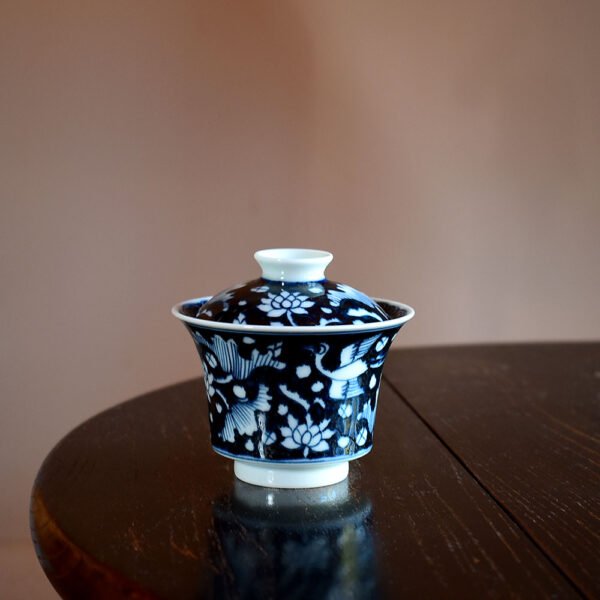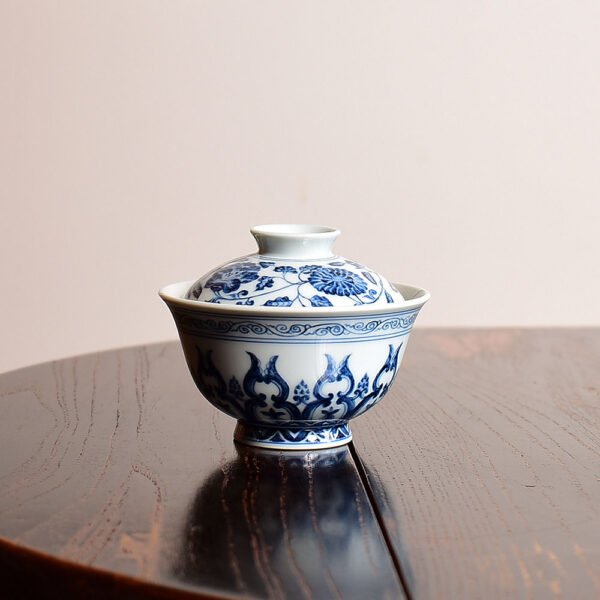The style of this super beautiful Gaiwan is Ming, using the underglaze blue technique, and entirely handcrafted and hand painted. The pattern features the classic design of intertwining Peony branches.
Peony, one of the beloved traditional patterns in our country, holds a special place in the hearts of the Chinese people with its lush and vibrant appearance and striking colors. As a symbol of our national spirit, it embodies the beautiful aspirations and good wishes for life, symbolizing the prosperity and longevity of the Chinese nation, with a history that stretches far into the past. The intertwined peony, known as “Wanshou Teng” or “Peony with Entwined Branches,” is a traditional auspicious pattern, that represents joyous occasions. Its continuous interlocking structure also conveys the meaning of “endless vitality” or “continuous growth.”
In addition, the beautiful tin spots on the porcelain add even more unique charm to it. The formation of tin spots is due to the high content of iron elements in local parts of the blue pigment. After reaching saturation in the high-temperature glaze solution and cooling down, the iron elements in the supersaturated part start to precipitate. If the iron content of the blue pigment is higher and the cooling rate is appropriate, tin spots are more likely to appear on the surface of the ware.
In addition to firing and materials, the formation of tin spots also involves the factor of glaze material. During the painting process, tin spots can also be formed due to the accumulation of blue pigment. Tin spots are more likely to appear on the surface of the ware at the intersections and the starting and ending points of brushstrokes. The formation of tin spots can be said to be a natural creation or an artificial decoration. This tin glazes not only add a rustic texture to the Gaiwan but also imbue it with a unique sense of history.
This Gaiwan exudes a charming style reminiscent of imitating the essence of Yuan Dynasty tea sets.




















There are no reviews yet.